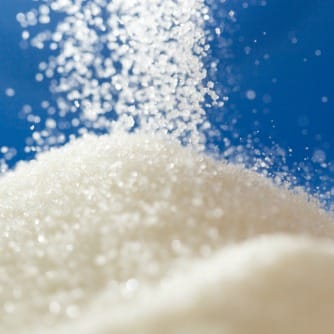A study recently conducted by academicians at Cornell University’s Division of Nutritional Sciences in tandem with researchers at the University of Luxembourg and Braunschweig University of Technology sheds light on a key biomarker for increased fat mass and weight gain. This biomarker is a sugar alcohol called erythritol. This finding is important as it conflicts with previous research that claimed erythritol is produced and metabolized by the human body. The study results were published in the Proceedings of the National Academy of Sciences.
The study was conducted as a component of Cornell University’s EnHANCE project. This is a Division of Nutritional Sciences initiative designed to develop a better understanding of how the shift from living at home during the high school years to living on/near campus alters dietary habits, metabolism, and weight.
About Erythritol
This sugar alcohol is present in a number of different foods like watermelon and pears. Erythritol has recently been added to low-calorie foods as a replacement for sugar and other sweeteners.
About the Study
The study was conducted as an accompanying analysis to identify metabolic indicators tied to increased fat mass and weight gain in younger individuals. In particular, the researchers were concerned with the “freshman 15”, referring to the rapid weight gain experienced by youngsters transitioning from high school to college. Over 3 million high school graduates enroll in colleges every autumn. It is quite common for the transition to dorm life to spur a considerable weight gain. According to Cornell professor Patricia Cassano, around 75 percent of these college freshmen endure weight gain as they segue from living at home to living on or near campus.
The research team found that young adults who endured weight gain and an increase in abdominal fat across a year’s time had fifteen times more blood erythritol at the beginning of the year compared to those who did not gain weight or lost weight/fat mass. Data from 172 freshmen was collected for the study. This information was gathered at the start and end of the academic year. Study participants filled out questionnaires, had physical measurements taken and allowed the researchers to use dual energy X-ray absorptiometry to accurately measure muscle and fat mass. Blood was also collected for biomarker measurement purposes. The research team developed nuanced techniques to determine how metabolites are created and metabolized. These techniques are also applicable to unknown metabolites.
A Look at the Findings
The study revealed an intriguing metabolic path that allows for the movement of dietary glucose containing erythritol. It was determined that erythritol is absorbed from food and also produced by the human body. The researchers replaced carbon atoms within glucose with “13C”, a heavy carbon. This allowed a precise tracking of glucose movement throughout the body’s metabolic process. The findings shocked everyone involved with the study. When subjects consumed 13C glucose, the carbon metabolized and appeared within blood erythritol soon thereafter.
The results are proof that the human body is capable of synthesizing sugar alcohol. Erythritol is not processed and released from the human body in its original form. It changes and affects the body’s metabolism. This is an important finding as it conflicts with prior assumptions.
Additional research is necessary to understand if the pathway is partially responsible for a heightened risk of weight gain. If it is determined to be responsible, researchers will attempt to pinpoint how this phenomenon occurs. The connection between heightened concentrations of blood erythritol and the onset of weight gain/fat mass is not yet fully understood. It is uncertain if endogenous erythritol or exposure stemming from food leads to weight gain tied to erythritol.




